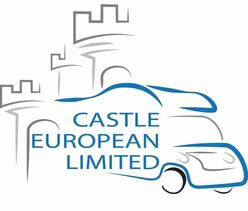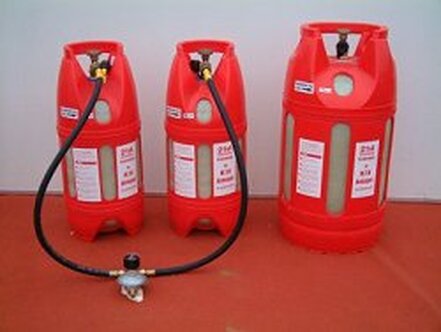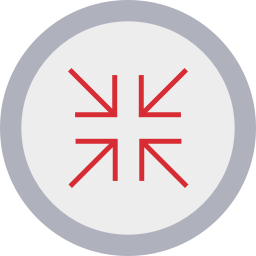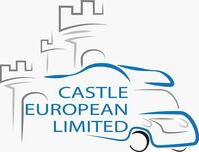What else do you need to know about travelling around Europe in a motorhome?
|
Okay, you've read through the process and FAQ's pages about saving money when you buy a new motorhome in the UK, using it to tour Europe and shipping it back to New Zealand, so now you might be interested to learn what else is involved with a European motorhome tour.
(Make sure you read down to the bottom of this page, to be sure you don't miss a thing!) |
Touring your way
Obviously the way you choose to live whilst in the UK/Europe is a big influence.
Will you eat out all the time, or shop with the locals in their supermarkets and browse the local street markets and cook for yourself? Do you plan to stay at campsites every night, or maybe use the much more economical (and often free) facilities, like French Aires, French Passion scheme, German Stellplatze, or Italian Aree di Sosta? A similar French Passion scheme is also available in Spain. Along with many French language guides there is now an English language Aires guide called, "All the Aires – France“ Published by Vicarious Books ISBN 978-0-9552808-1-8 |
Health care
Travel health insurance for both NZ and UK passport holders is strongly recommended.
New Zealand only has reciprocal health care agreements with Australia and the UK. NZ citizens have no right to free healthcare in any country in continental Europe. Check out the Ministry of Health Website and select 'Eligibility for Healthcare' from the menu. Whilst British citizens have reduced cost, or sometimes free healthcare in EU countries, you are only eligible for this if you are ordinarily resident in the UK. Visit Health Advice for Travellers and Travelling in Europe. |
Driving, insurance, ferries, power, fuel and more...
Drivers Licence requirements
In addition to your full New Zealand (or UK) Driving Licence you’ll need an 'International Driving Permit'.
There are one or two countries that don’t require this, such as France, but it’s still recommended to carry one. To apply for an IDP in New Zealand visit your local AA office, or via mail to PO Box 5 Auckland. More information and apply for your IDP online at NZ AA. If you’re driving in Europe or the UK on a non-European driving licence you are limited to vehicles with a maximum gross weight of 3500kgs regardless of the classes of vehicle you are licensed to drive at home. An International Driving Permit does not change this. There is no reciprocal agreement to recognise Heavy Goods Vehicle licences between UK/EU countries and non UK/EU countries. Driving in Europe
You will find excellent information about legal requirements for driving in Europe at UK Caravan Club and UK AA. We encourage you to read through these websites before you head off on your trip, as some of the rules and regulations in Europe are quite different to those you’re used to at home.
|
Driving requirements in France
It is compulsory in France to carry in the vehicle at least one disposable, unused breathalyser kit.
This must be a model certified by the French authorities and carry the 'NF' mark. These are available in most French supermarkets for a cost around €1.50 to €2.00. You should carry two in case one is damaged or used so that you can still produce a usable one. Breathalyser kits can also be purchased in the UK before crossing to France at Halfords (like Supercheap in Australia/NZ). A twin pack is around £6.00 Halfords are a good source of all the bits and pieces you need to have on board to drive legally in Europe: Warning triangles, reflective jackets for all onboard, first aid kits, spare light bulb kits and so on. Vist Halfords. Radar detectors are now illegal in France and this includes automated speed camera warnings on satnav systems such as Tom Toms. New model Tom Toms, Navman and the like will show speed camera areas as danger areas (which is legal), but if you have an older version you will need to disable the speed cameras warnings manually. Since 31 March 2017 several French cities require an emission sticker is displayed on the windscreen of any vehicle being driven in the city. Initially this is only in Paris, Lyon and Grenoble but the intention is to roll it out across all major cities in France within three years. These stickers need to be bought and paid for in advance. Read more here. Driving requirements in Germany
Germany has a similar emission's requirement. Known as Umwelt stickers, these can be purchased online or at selected outlets before entering a city and must be displayed on the windscreen.
If you’re travelling in a new vehicle the sticker will be green. If you have time, we strongly suggest purchasing your Umweltplakette in advance. Order online here. |
Vehicle insurance
|
Most UK insurance companies won’t insure a vehicle who’s owner doesn’t have a European Community issued driving licence and a permanent address in the UK.
However, Milestone Insurance Consultants and Downunder Insurance in London specialise in this sort of situation. and can usually offer a policy to a traveller from New Zealand, Australia, Canada and South Africa, as well as many other non-European applicants. Downunder Insurance require applicants to be under 70 years of age and they have a maximum value for the insured vehicle of £55,000. Milestone Insurance Consultants are more flexible. Insurance Companies Downunder Insurance - 0800 393 908 or +44 207 402 9211 Email here Milestone Insurance Consultants - Email here HIC Insurance - +44 1279719915 Dayinsure |
Insurance is a difficult (and expensive!) area for non residents of the EC, but its not insurmountable.
With UK based insurance you might need an 'International Motor Insurance Card', issued under the Authority of the Motor Insurers Bureau. However this is often waived if a standard part of the cover is travel in Europe. Often this is limited to ninety days or maybe six months. This card is often referred to as a “Green Card”. It will say the countries it’s valid for. Along with this you should also receive
|
The English Channel
Most people fly into the UK and pick up their motorhome there. If you’re heading over to Europe there are two ways to get your motorhome across from the UK: the ferries, and the Channel Tunnel. Transportation straight to Scandinavia is by ferry.
Travelling by ferry
There are many companies competing for your business, so be sure to shop around!
Norfolk Line, P&O, Brittany Ferries, TransEuropa and Speedferries are some of the main companies. Be aware that officially Speedferries have a maximum width restriction of 2.0m. This may or may not be enforced when you drive on, but you don't need the hassle. This rules out most coachbuilt motorhomes, however, you should be okay with a panel van type conversion. The key with all the ferry lines is to book as early as possible to get the good fares, and you can book online. Generally, the later you make a booking the more you’ll pay. You may have to pay £140+ if you don’t book in advance. Another alternative is Harwich to the Hook of Holland. If you’re heading through Germany this could be a good way to go. Stena Line operate this service. If you want to sail further afield, Brittany Ferries will take you from Plymouth or Portsmouth to Santander on the northern coast of Spain for about £320 one way in June. (Two people, 7m van). This is a 24hr sail and does not include a cabin – you get two seats. Cabins are available at extra cost. Generally evening/night sailings are cheaper but special offers come along from time to time and can make daytime sailings competitive with night sailings. |
Other ferry routes
Stena Lines provide services to Ireland from Fishguard-Rosslare, Holyhead-Dublin and Fleetwood-Larne. Stena Line will take you from Holyhead to Dublin from around £185 each way.
If you want to cross the North Sea from the UK to Norway or Denmark try Fjord Line Alternatively you could sail to Denmark then drive across the Öresund Bridge which carries the E20 across the Öresund Strait to Sweden. Anek Lines Ferries will take you between Italy and Greece, as will Blue Star Ferries. Mobyline Ferries will get you between Italy, Corsica and Sardinia. Corsica Ferries are another company offering similar crossings. The Terrenia Shipping Line probably has the most comprehensive ferry route network between these islands including Sicily and they’ll also get you across the Adriatic. Ferry contact information
A quick way of finding a good ferry deal, as well as general information about sailings is Ferry Online
Norfolkline - 0870 870 1020 (Dover-Dunkirk, 2hrs) P&O Ferries - 0870 520 2020 (Dover-Calais, 90mins) SpeedFerries - 0871 222 7456 (Dover-Boulogne fastcraft, 50mins) Stena Lines - 08447 70 70 70 TransEuropa Ferries - 01843 595 522 (Ramsgate – Oostendek, 4hrs 30mins) Brittany Ferries - 0870 536 0360 (Portsmouth-Caen, 6hrs); (Portsmouth-Cherbourg fastcraft, 3hrs); (Poole-Cherbourg, 4hrs, or fastcraft, 2hrs 15mins); (Portsmouth-St Malo, 8hrs 45mins); (Plymouth-Roscoff 6hrs). |
Electricity hook-up
There's no problem with the voltage in western Europe, but you’ll need an adaptor to make a connection as at many places the sockets are the two pin type, which is different to the ones used in New Zealand and the UK.
Adaptors are readily available at camping and caravan shops in the UK and if necessary many camp sites in Europe have some they lend out – but don’t rely on this. Expect to pay about £5 for an adaptor. An extra-long lead is recommended about 25 metres minimum – as the plug-in power points tend to be centralised – not positioned at each site (pitch) like they are in New Zealand. We strongly recommend that you use a polarity tester before connecting at each new site. Again these are available at camping and caravan shops in the UK at about £10. Many campsite supplies in Europe are limited in the amount of current they can supply and you may be asked to pay a higher rate for a higher current rating. This is usually done by changing the size of the circuit breaker to match the supply required, or in some cases the supply achievable. |
Gas cylinders
Gas cylinders are a little more complex than the electricity supply, but armed with the correct equipment, you shouldn’t have any problems. There is excellent information on the UK Camping and Caravan Club website.
The potential difficulty comes from the fact that almost all countries in western Europe have their own types of gas bottles or connections, and often have their own systems for having them filled. It’s also uncommon to own your own bottle – you usually rent one. Although 'Camping Gaz' is available almost everywhere it only comes in small bottles (about 4kgs) and is very expensive. However, an economical and convenient alternative is available. Here’s where a little knowledge can save you a lot of money... at least two companies in the UK, MTH Autogas and Gaslow now manufacture gas bottles which can be refilled with LPG at many service stations throughout Europe equipped for filling LPG powered vehicles. Their cylinders cost between £70 and £150 but will save you a fortune over several months because the gas is a fraction of the price of Camping Gaz. The total cost of buying and regularly refilling a gas cylinders over a period of three or four months is likely to be less than half the price of Camping Gaz, which is the only other alternative. When your trip is over you can sell your gas cylinder in the UK, if you’re shipping your motorhome back to New Zealand, further enhancing your overall savings compared to Camping Gaz. The advantage of refillable cylinders doesn’t end with the cost saving either, imagine how difficult it can be to find a place which sells Camping Gaz when you’re travelling. If you can’t speak the language and you don’t have local knowledge you can waste a lot of time driving around looking for a Camping Gaz supplier, and given the small cylinders that Camping Gaz is available in, you’re going to be doing this very frequently. If you have a refillable cylinder, simply top up your LPG at a service station when filling the vehicle fuel tank. You should consider this refillable option. For safety, choose a cylinder with an automatic filling cut-off so that it can’t be over-filled. You’ll still need adaptors for filling in Europe, as some countries use different fittings to connect to the cylinder, but tell your cylinder supplier where you’re going and they’ll fix you up. |
Route planning
Take a look at the excellent Michelin route planning website. Here you can also buy navigational software as well as Michelin Guides.
Satnav systems, which can be programmed with the size of the vehicle you’re driving, can be a big help in avoiding narrow lanes or low bridges, although they’re quite a bit more expensive than standard satnavs. You can also order the superb Michelin Green Guides online which provide very detailed information about small areas. Failing that, good road atlas’ are available at all major service stations such as Shell, Mobil, Elf, BP, etc. |
FuelAlthough aimed at commercial transport operators, if you register on the International Road Transport Unions website (it’s free!) you can check current fuel prices throughout Europe as well as checking out major roadworks and delays.
Markets and supermarkets
There are many supermarket chains in Western Europe. Some of them also sell fuel and are usually cheaper than service stations.
Names you’ll see include ALDI, LIDL, SPAR, Intermarché, Carrefour, Alcampo, Caprabo and many others. Local street markets are excellent for fresh food and of course part of the fun, but watch the prices, as they can be expensive. Tourist areas such as the French and Italian Riviera can be expensive, try shopping in quieter areas with the locals. |
When is the best time to go to UK/Europe?
Unless you’re going for the skiing, anytime from May to October.
August is peak holiday time for Europeans and popular destinations will be very busy then. Many campsites increase their prices from late July until the end of August. Some European campsites close during October, for the winter, but there are still plenty which remain open, including many French Aires, German Stellplatz and Italian Aree di Sostas. If you have to begin or end your trip in July or August it would be wise to pre-book your English Channel crossing well in advance. Finding places to stay shouldn’t be too much of a problem as long as you’re flexible with your plans and don’t mind close neighbours at campsites. |
Have a question or need more information..?
At Castle European we want to help you in any way we can.
Whether you have a question about French street markets, the best site to stay near Venice, or a quote for a new motorhome. If we can help make your dream trip to Europe come true, we’ll be delighted to do so. Even if you’re not yet ready to make a vehicle purchase, w would be happy to hear from you and we’ll do our best to answer your questions. |
|
CASTLE EUROPEAN - YOUR NEW ZEALAND MOTORHOME IMPORTING SPECIALISTS
+64 (0) 21 157 0047
RMVT 381810 | NZMCA 86029
|
QUICK LINKS
|








